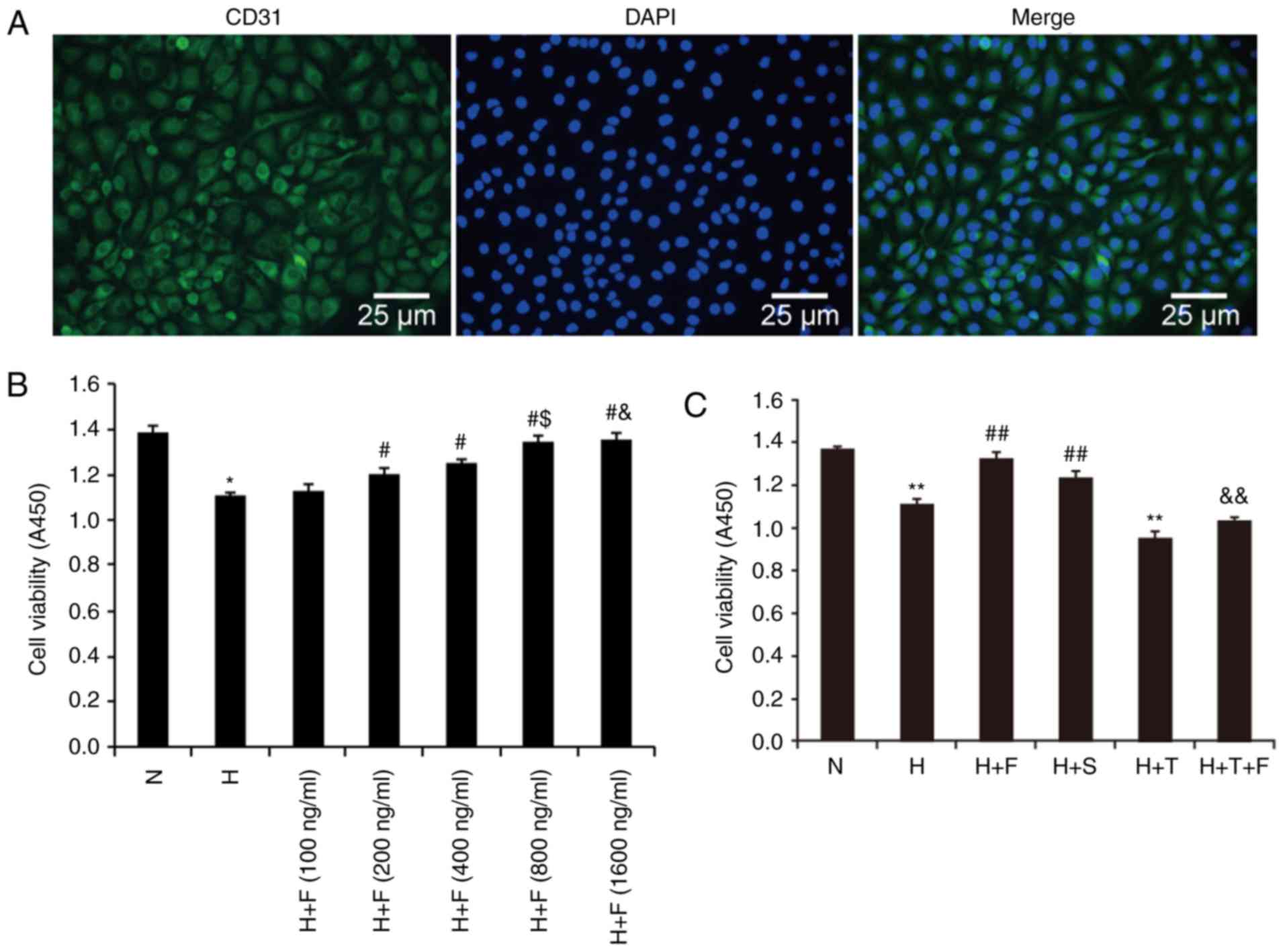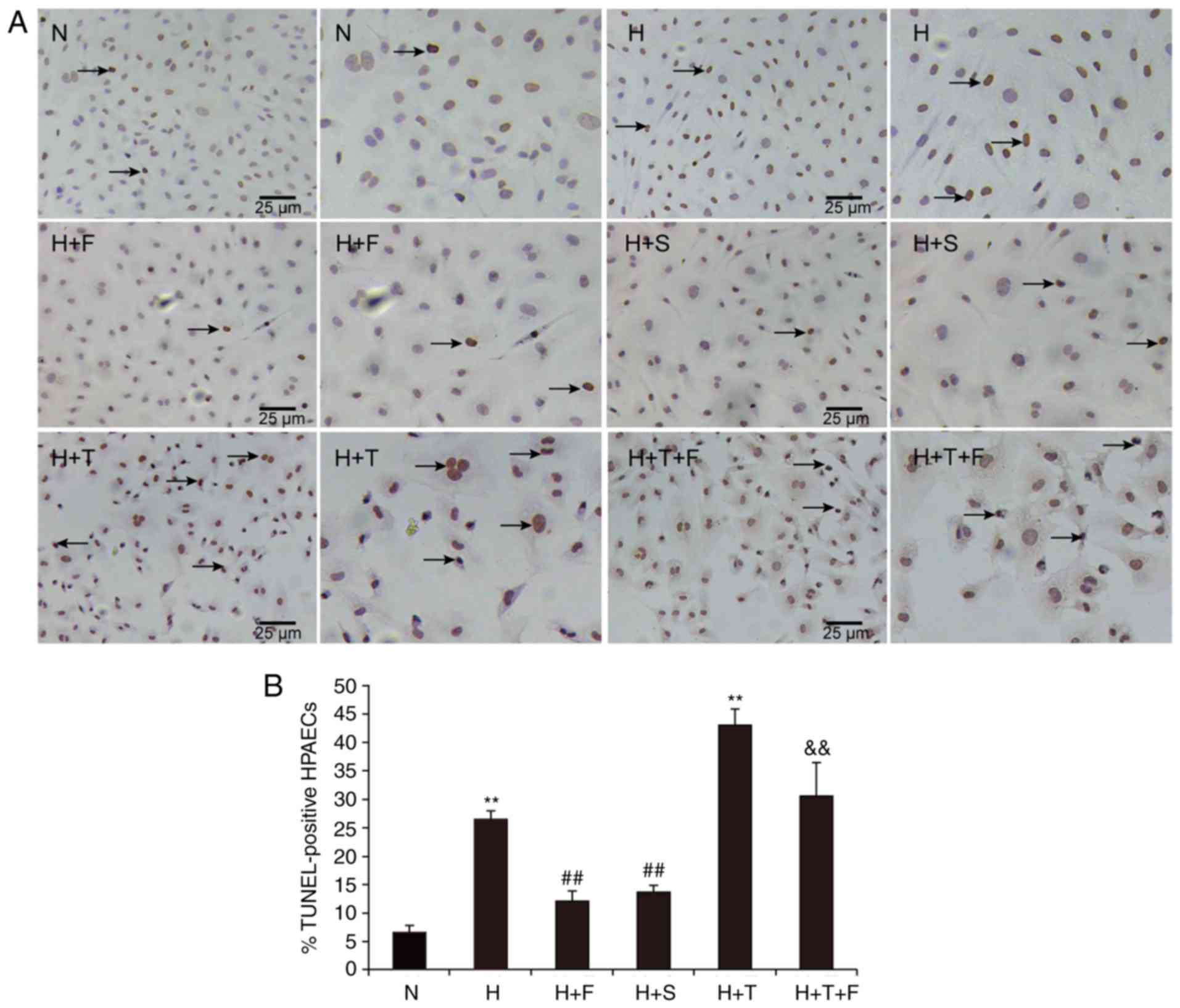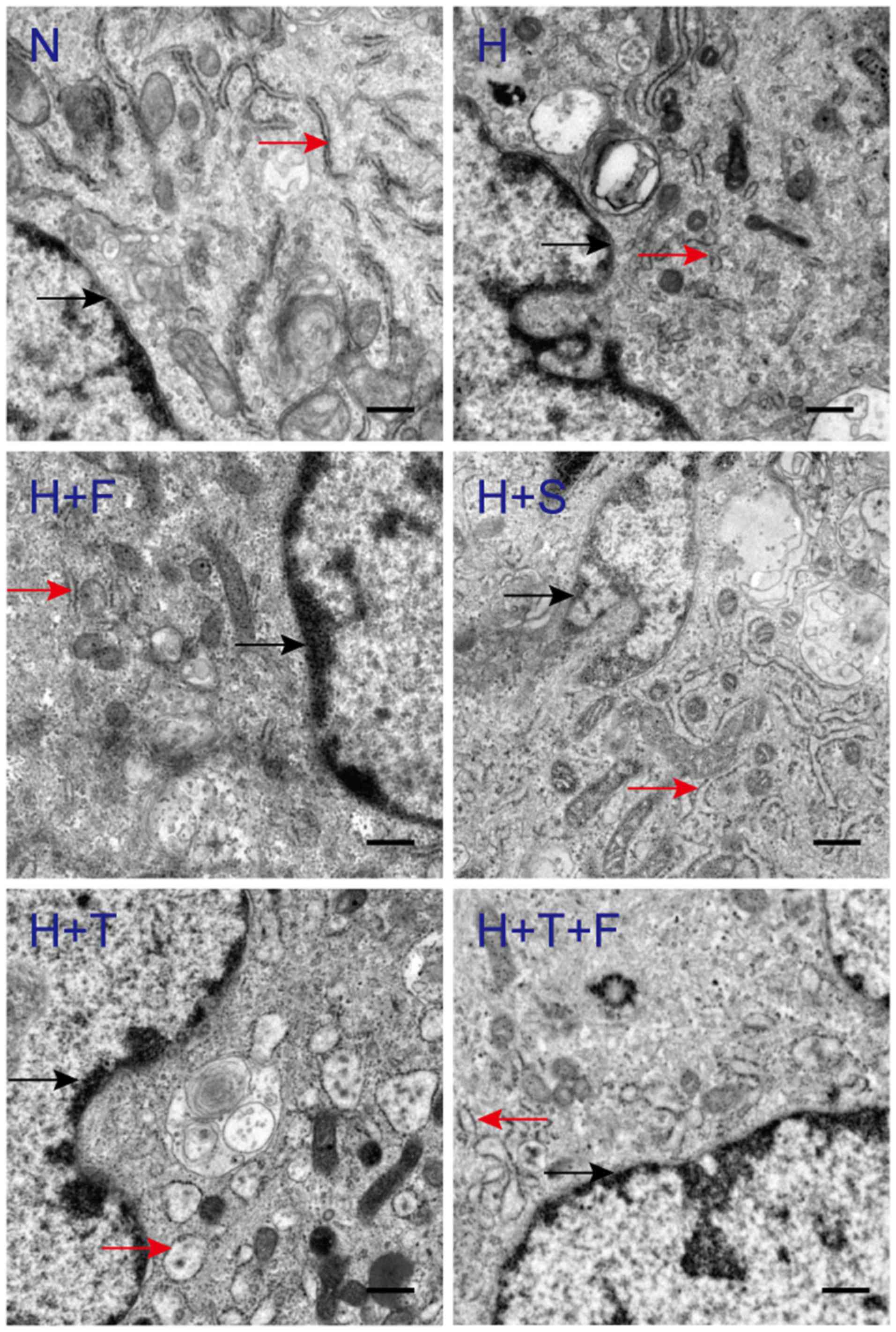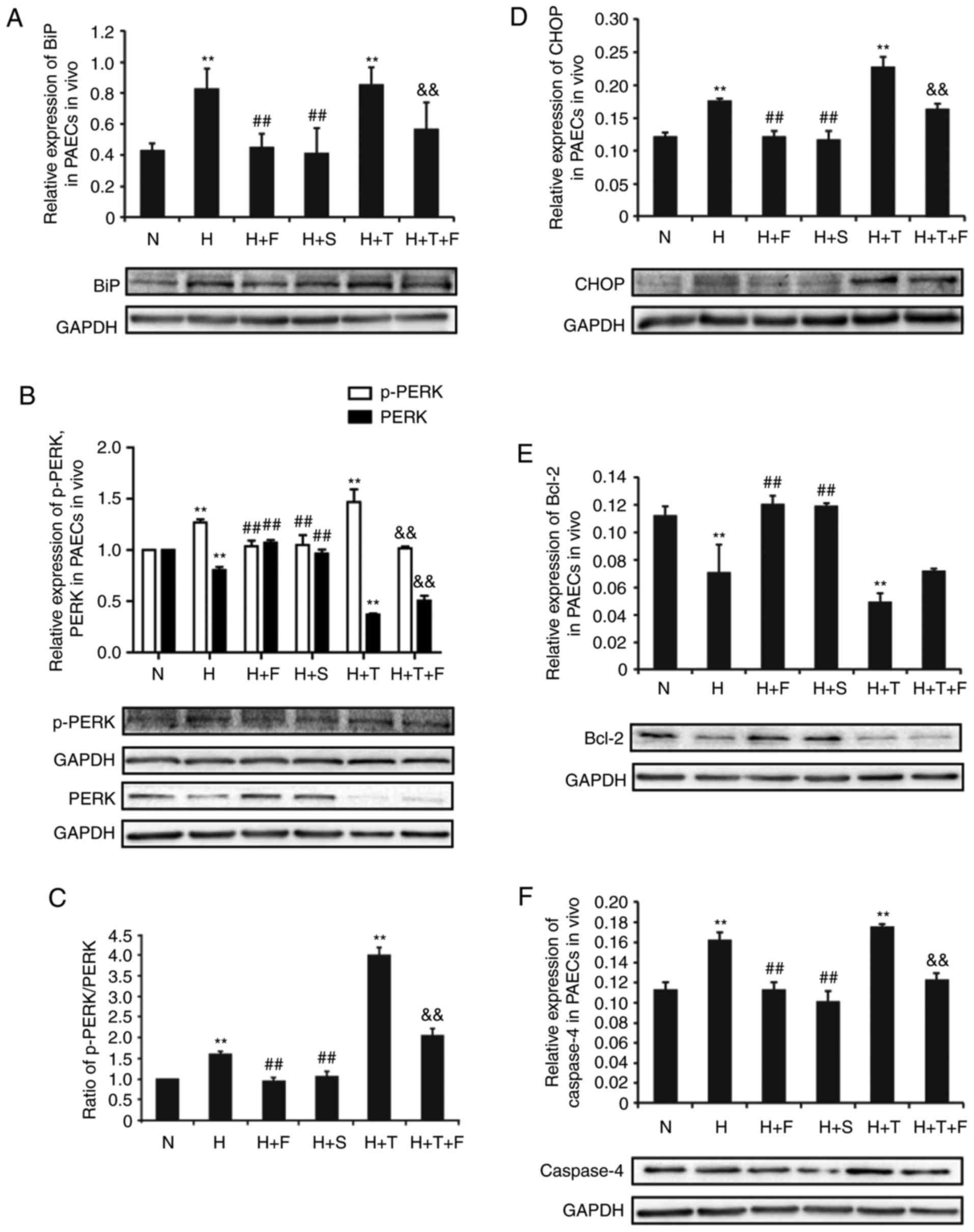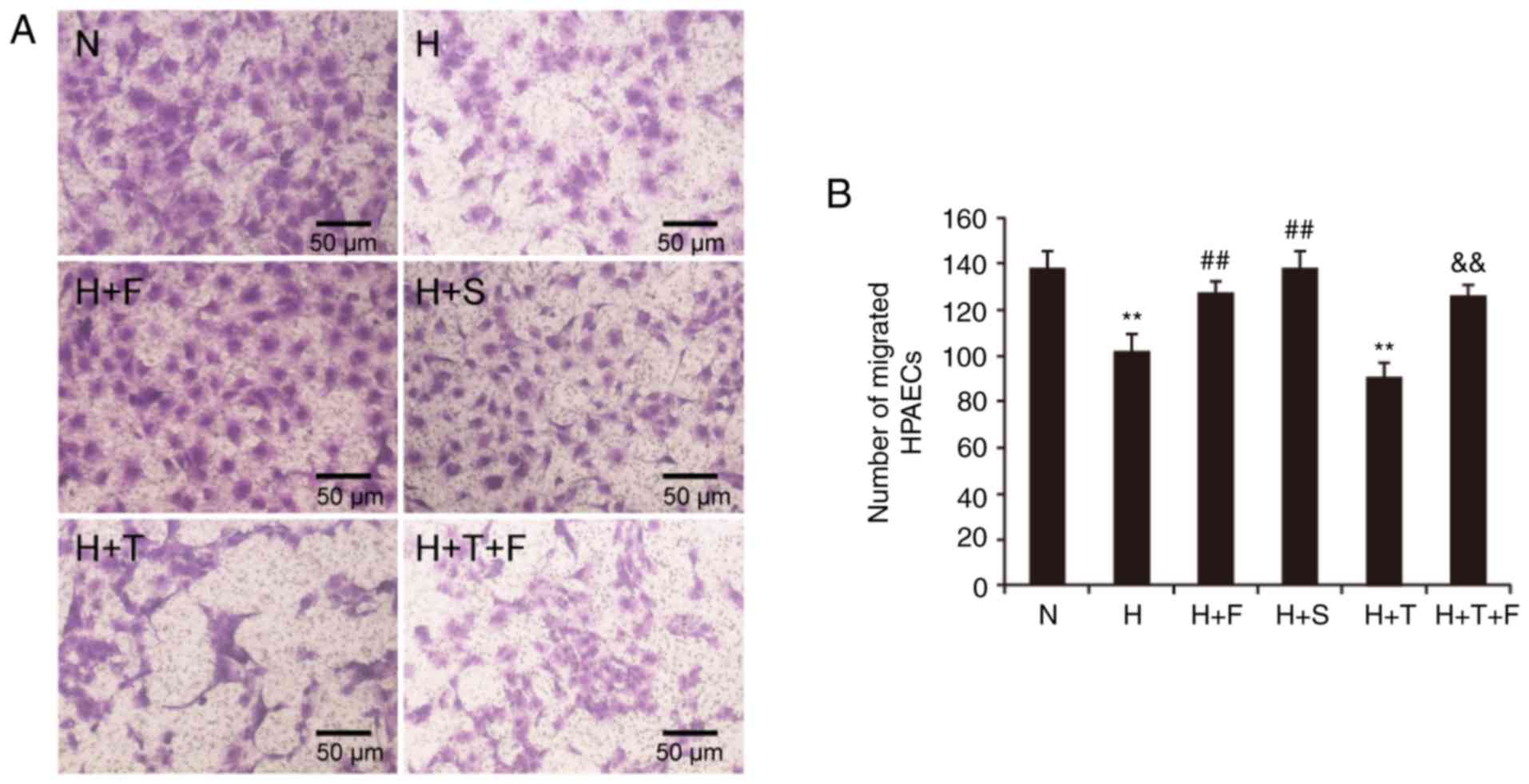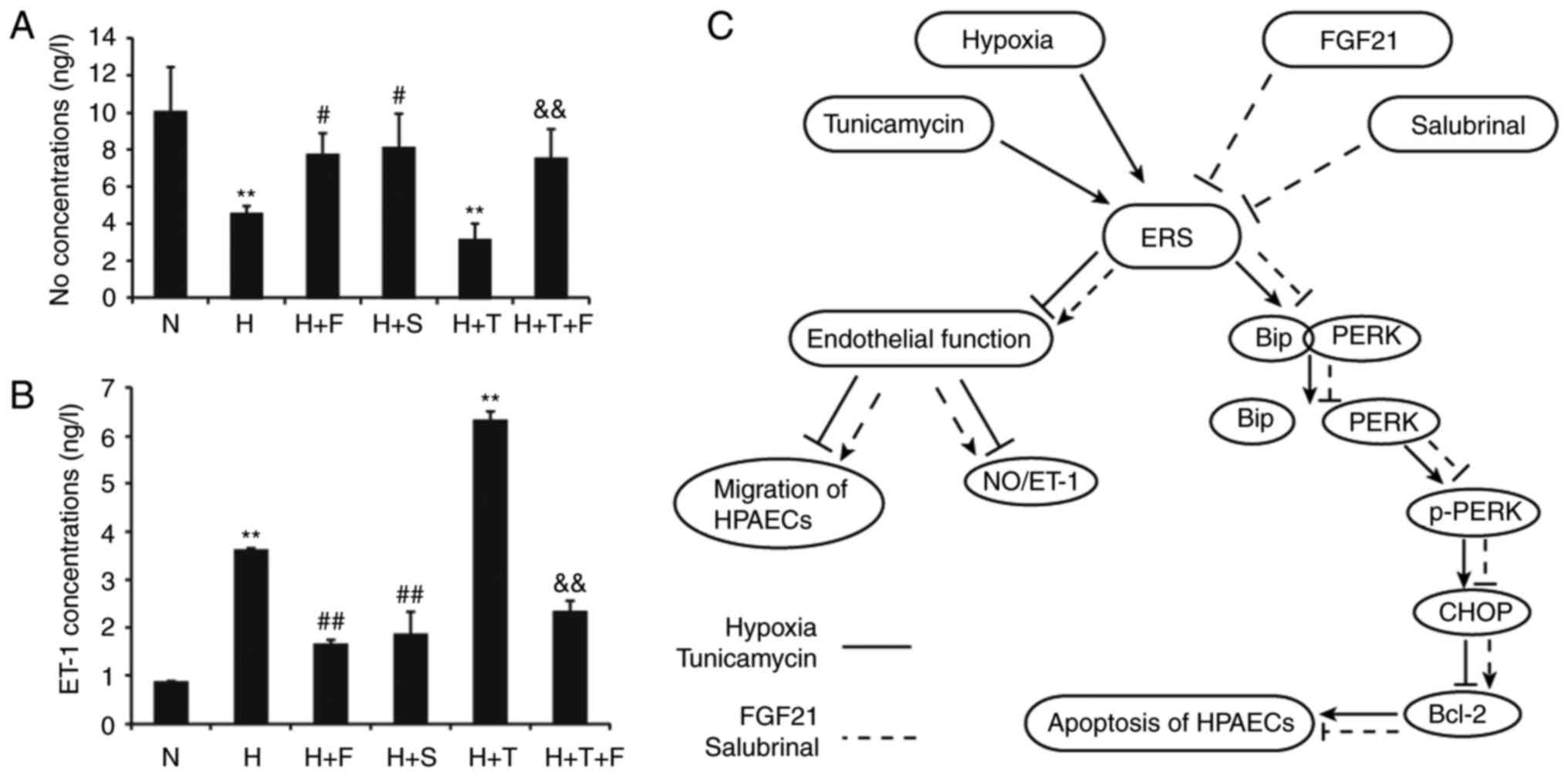|
1
|
Sutendra G and Michelakis ED: The
metabolic basis of pulmonary arterial hypertension. Cell Metab.
19:558–573. 2014. View Article : Google Scholar : PubMed/NCBI
|
|
2
|
Huang X, Zou L, Yu X, Chen M, Guo R, Cai
H, Yao D, Xu X, Chen Y, Ding C, et al: Salidroside attenuates
chronic hypoxia-induced pulmonary hypertension via adenosine A2a
receptor related mitochondria-dependent apoptosis pathway. J Mol
Cell Cardiol. 82:153–166. 2015. View Article : Google Scholar : PubMed/NCBI
|
|
3
|
Voelkel NF and Cool C: Pathology of
pulmonary hypertension. Cardiol Clin. 22:343–351. 2004. View Article : Google Scholar : PubMed/NCBI
|
|
4
|
Eddahibi S, Guignabert C, Barlier-Mur AM,
Dewachter L, Fadel E, Dartevelle P, Humbert M, Simonneau G, Hanoun
N, Saurini F, et al: Cross talk between endothelial and smooth
muscle cells in pulmonary hypertension: Critical role for
serotonin-induced smooth muscle hyperplasia. Circulation.
113:1857–1864. 2006. View Article : Google Scholar : PubMed/NCBI
|
|
5
|
Humbert M, Montani D, Perros F, Dorfmüller
P, Adnot S and Eddahibi S: Endothelial cell dysfunction and cross
talk between endothelium and smooth muscle cells in pulmonary
arterial hypertension. Vascul Pharmacol. 49:113–118. 2008.
View Article : Google Scholar : PubMed/NCBI
|
|
6
|
Sahara M, Sata M, Morita T, Hirata Y and
Nagai R: Nicorandil attenuates monocrotaline-induced vascular
endothelial damage and pulmonary arterial hypertension. PLoS One.
7:e333672012. View Article : Google Scholar : PubMed/NCBI
|
|
7
|
Farkas L, Farkas D, Ask K, Möller A,
Gauldie J, Margetts P, Inman M and Kolb M: VEGF ameliorates
pulmonary hypertension through inhibition of endothelial apoptosis
in experimental lung fibrosis in rats. J Clin Invest.
119:1298–1311. 2009. View Article : Google Scholar : PubMed/NCBI
|
|
8
|
Wan XS, Lu XH, Xiao YC, Lin Y, Zhu H, Ding
T, Yang Y, Huang Y, Zhang Y, Liu YL, et al: ATF4- and
CHOP-dependent induction of FGF21 through endoplasmic reticulum
stress. Biomed Res Int. 2014:8078742014. View Article : Google Scholar : PubMed/NCBI
|
|
9
|
Walter P and Ron D: The unfolded protein
response: From stress pathway to homeostatic regulation. Science.
334:1081–1086. 2011. View Article : Google Scholar : PubMed/NCBI
|
|
10
|
Muñoz JP and Zorzano A: Endoplasmic
reticulum stress enters a Nogo Zone. Sci Transl Med. 3:88ps262011.
View Article : Google Scholar : PubMed/NCBI
|
|
11
|
Koyama M, Furuhashi M, Ishimura S, Mita T,
Fuseya T, Okazaki Y, Yoshida H, Tsuchihashi K and Miura T:
Reduction of endoplasmic reticulum stress by 4-phenylbutyric acid
prevents the development of hypoxia-induced pulmonary arterial
hypertension. Am J Physiol Heart Circ Physiol. 306:H1314–H1323.
2014. View Article : Google Scholar : PubMed/NCBI
|
|
12
|
Fan XF, Li WJ, Chen ZQ, Wang XR, Kong XX,
Mao SZ, Hu LG and Gong YS: Changes of endoplasmic reticulum
stress-induced apoptosis in pulmonary tissue of rats with hypoxic
pulmonary hypertension. Zhongguo Ying Yong Sheng Li Xue Za Zhi.
27:270–274. 2011.In Chinese. PubMed/NCBI
|
|
13
|
Ost M, Coleman V, Kasch J and Klaus S:
Regulation of myokine expression: Role of exercise and cellular
stress. Free Radic Biol Med. 98:78–89. 2016. View Article : Google Scholar : PubMed/NCBI
|
|
14
|
Inagaki T: Research perspectives on the
regulation and physiological functions of FGF21 and its association
with NAFLD. Front Endocrinol (Lausanne). 6:1472015.
|
|
15
|
Kim SH, Kim KH, Kim HK, Kim MJ, Back SH,
Konishi M, Itoh N and Lee MS: Fibroblast growth factor 21
participates in adaptation to endoplasmic reticulum stress and
attenuates obesity-induced hepatic metabolic stress. Diabetologia.
58:809–818. 2015. View Article : Google Scholar
|
|
16
|
Shimizu M, Morimoto H, Maruyama R, Inoue J
and Sato R: Selective regulation of FGF19 and FGF21 expression by
cellular and nutritional stress. J Nutr Sci Vitaminol (Tokyo).
61:154–160. 2015. View Article : Google Scholar
|
|
17
|
Guo Q, Xu L, Liu J, Li H, Sun H, Wu S and
Zhou B: Fibroblast growth factor 21 reverses suppression of
adiponectin expression via inhibiting endoplasmic reticulum stress
in adipose tissue of obese mice. Exp Biol Med (Maywood).
242:441–447. 2017. View Article : Google Scholar
|
|
18
|
Lü Y, Liu JH, Zhang LK, DU J, Zeng XJ, Hao
G, Huang J, Zhao DH, Wang GZ and Zhang YC: Fibroblast growth factor
21 as a possible endogenous factor inhibits apoptosis in cardiac
endothelial cells. Chin Med J (Engl). 123:3417–3421. 2010.
|
|
19
|
Li J, Zhou J, Zhang D, Song Y, She J and
Bai C: Bone marrow-derived mesenchymal stem cells enhance autophagy
via PI3K/AKT signalling to reduce the severity of
ischaemia/reper-fusion-induced lung injury. J Cell Mol Med.
19:2341–2351. 2015. View Article : Google Scholar : PubMed/NCBI
|
|
20
|
Gong T, Wang Q, Lin Z, Chen ML and Sun GZ:
Endoplasmic reticulum (ER) stress inhibitor salubrinal protects
against ceramide-induced SH-SY5Y cell death. Biochem Biophys Res
Commun. 427:461–465. 2012. View Article : Google Scholar : PubMed/NCBI
|
|
21
|
Guoliang H, Kunlun H, Li F, Xin L and
Ruijun L: Salubrinal protects endoplasmic reticulum of cardiac
muscle cells against stress-associated apoptosis. Jun Yi Jin Xiu
Xue Yuan Xue Bao. 31:483–485. 2010.In Chinese.
|
|
22
|
Wang H, Zuo X, Wang Q, Yu Y, Xie L, Wang
H, Wu H and Xie W: Nicorandil inhibits hypoxia-induced apoptosis in
human pulmonary artery endothelial cells through activation of
mito-KATP and regulation of eNOS and the NF-κB pathway. Int J Mol
Med. 32:187–194. 2013. View Article : Google Scholar : PubMed/NCBI
|
|
23
|
Morecroft I, White K, Caruso P, Nilsen M,
Loughlin L, Alba R, Reynolds PN, Danilov SM, Baker AH and Maclean
MR: Gene therapy by targeted adenovirus-mediated knockdown of
pulmonary endothelial Tph1 attenuates hypoxia-induced pulmonary
hypertension. Mol Ther. 20:1516–1528. 2012. View Article : Google Scholar : PubMed/NCBI
|
|
24
|
Paulin R and Michelakis ED: The metabolic
theory of pulmonary arterial hypertension. Circ Res. 115:148–164.
2014. View Article : Google Scholar : PubMed/NCBI
|
|
25
|
Mao SZ, Fan XF, Xue F, Chen R, Chen XY,
Yuan GS, Hu LG, Liu SF and Gong YS: Intermedin modulates hypoxic
pulmonary vascular remodeling by inhibiting pulmonary artery smooth
muscle cell proliferation. Pulm Pharmacol Ther. 27:1–9. 2014.
View Article : Google Scholar
|
|
26
|
Wang S and Kaufman RJ: The impact of the
unfolded protein response on human disease. J Cell Biol.
197:857–867. 2012. View Article : Google Scholar : PubMed/NCBI
|
|
27
|
Liu Z, Lv Y, Zhao N, Guan G and Wang J:
Protein kinase R-like ER kinase and its role in endoplasmic
reticulum stress-decided cell fate. Cell Death Dis. 6:e18222015.
View Article : Google Scholar : PubMed/NCBI
|
|
28
|
Vannuvel K, Renard P, Raes M and Arnould
T: Functional and morphological impact of ER stress on
mitochondria. J Cell Physiol. 228:1802–1818. 2013. View Article : Google Scholar : PubMed/NCBI
|
|
29
|
Rutkowski DT and Kaufman RJ: A trip to the
ER: Coping with stress. Trends Cell Biol. 14:20–28. 2004.
View Article : Google Scholar : PubMed/NCBI
|
|
30
|
Szegezdi E, Fitzgerald U and Samali A:
Caspase-12 and ER-stress-mediated apoptosis: The story so far. Ann
NY Acad Sci. 1010:186–194. 2003. View Article : Google Scholar
|
|
31
|
Richardson CE, Kinkel S and Kim DH:
Physiological IRE-1-XBP-1 and PEK-1 signaling in caenorhabditis
elegans larval development and immunity. PLoS Genet.
7:e10023912011. View Article : Google Scholar : PubMed/NCBI
|
|
32
|
Senkal CE, Ponnusamy S, Manevich Y,
Meyers-Needham M, Saddoughi SA, Mukhopadyay A, Dent P, Bielawski J
and Ogretmen B: Alteration of ceramide synthase 6/C16-ceramide
induces activating transcription factor 6-mediated endoplasmic
reticulum (ER) stress and apoptosis via perturbation of cellular
Ca2 and ER/Golgi membrane network. J Biol Chem.
286:42446–42458. 2011. View Article : Google Scholar : PubMed/NCBI
|
|
33
|
Schröder M and Kaufman RJ: ER stress and
the unfolded protein response. Mutat Res. 569:29–63. 2005.
View Article : Google Scholar
|
|
34
|
Boyce M, Bryant KF, Jousse C, Long K,
Harding HP, Scheuner D, Kaufman RJ, Ma D, Coen DM, Ron D and Yuan
J: A Selective Inhibitor of eIF2alpha dephosphorylation protects
cells from ER stress. Science. 307:935–939. 2005. View Article : Google Scholar : PubMed/NCBI
|
|
35
|
Wu Y, Adi D, Long M, Wang J, Liu F, Gai
MT, Aierken A, Li MY, Li Q, Wu LQ, et al: 4-Phenylbutyric acid
induces protection against pulmonary arterial hypertension in rats.
PLoS One. 11:e01575382016. View Article : Google Scholar : PubMed/NCBI
|
|
36
|
Ornitz DM and Itoh N: Fibroblast growth
factors. Genome Biol. 2:REVIEWS3005. 2001. View Article : Google Scholar : PubMed/NCBI
|
|
37
|
Schaap FG, Kremer AE, Lamers WH, Jansen PL
and Gaemers IC: Fibroblast growth factor 21 is induced by
endoplasmic reticulum stress. Biochimie. 95:692–699. 2013.
View Article : Google Scholar
|
|
38
|
Jiang S, Yan C, Fang QC, Shao ML, Zhang
YL, Liu Y, Deng YP, Shan B, Liu JQ, Li HT, et al: Fibroblast growth
factor 21 is regulated by the IRE1α-XBP1 branch of the unfolded
protein response and counteracts endoplasmic reticulum
stress-induced hepatic steatosis. J Biol Chem. 289:29751–29765.
2014. View Article : Google Scholar : PubMed/NCBI
|
|
39
|
Budhiraja R, Tuder RM and Hassoun PM:
Endothelial dysfunction in pulmonary hypertension. Circulation.
109:159–165. 2004. View Article : Google Scholar : PubMed/NCBI
|
|
40
|
Marletta MA: Nitric oxide synthase
structure and mechanism. J Biol Chem. 268:12231–12234.
1993.PubMed/NCBI
|
|
41
|
Ozaki M, Kawashima S, Yamashita T, Ohashi
Y, Rikitake Y, Inoue N, Hirata KI, Hayashi Y, Itoh H and Yokoyama
M: Reduced hypoxic pulmonary vascular remodeling by nitric oxide
from the endothelium. Hypertension. 37:322–327. 2001. View Article : Google Scholar : PubMed/NCBI
|
|
42
|
Rubin LJ, Badesch DB, Barst RJ, Galie N,
Black CM, Keogh A, Pulido T, Frost A, Roux S, Leconte I, et al:
Bosentan therapy for pulmonary arterial hypertension. N Engl J Med.
346:896–903. 2002. View Article : Google Scholar : PubMed/NCBI
|















